“I will shock you, ask me what is the price of this huge red lantern?” The old vendor at Al-Sayeda Zeinab Ramadan Makeshift market told me.
“Shock me” I replied.
 |
| That huge big handmade lantern made of cloth is sold for LE 4,000 |
“It is sold for LE 4,000,” he told me.
This is the price of the largest size of the Egyptian handmade traditional lantern whether made by cloth like the one above or like the traditional glass and tin.
Usually, those sizes are sold to restaurants, companies, embassies and shops as well as exported to other Arab countries.
Ramadan Kareem again
This post is not your usual Ramadan celebratory post celebrating Egypt’s traditional Ramadan lanterns and markets because it comes at a time of economic crisis.
 |
| Lanterns sold in front of El-Sayeda Zeinab Mosque in Cairo |
Although there has been a ban on imported lanterns since 2015 “I think the ban was older than that” which made the Egyptian traditional lanterns not only survive but also regain their power regionally, the prices of the lanterns went up by 20%-40% compared to the last year.
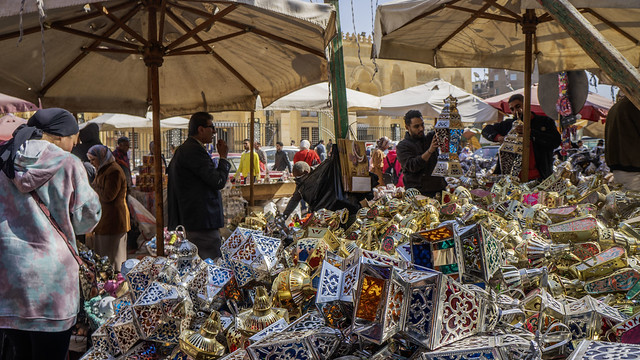 |
| Traditional lanterns still reign but in less quantity in the market this year |
 |
| The Egyptian traditional lanterns made of glass and tin sold at the market |
 |
| The plastic lantern's price jumped due to the sound chip |
The usual range of Egyptian traditional tin-glass lanterns, wooden lanterns and cloth lanterns were all there in addition to the plastic lanterns.
The prices started in El-Sayeda Zeinab Ramadan makeshift market from LE 15-35 to LE 4,000.
 |
| Selling different times of lanterns at the market |
I saw fewer people buying lanterns already in the market than at any other time except in 2020 when it was not held due to Coronavirus.
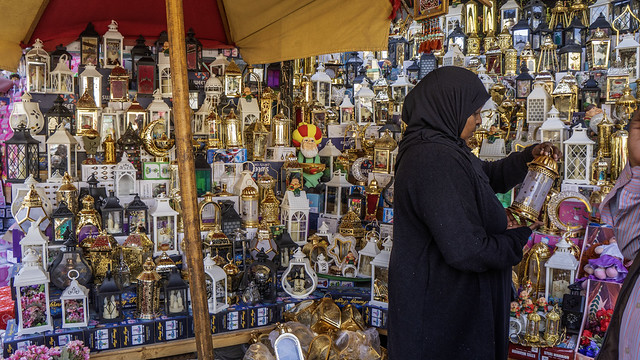 |
| A Sudanese woman checking a Ramadan lantern at the market |
I visited Cairo’s Al-Sayeda Zeinab’s Ramadan annual market at its peak, 24 hours before the start of the holy month.
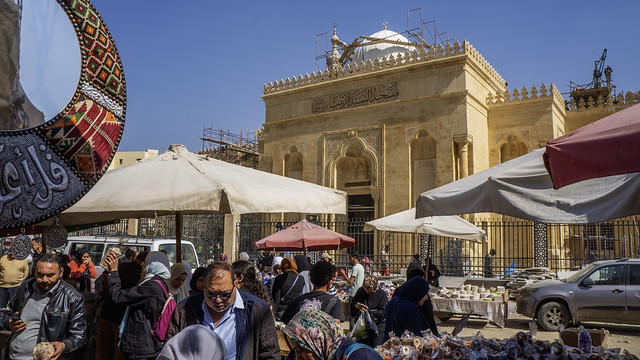 |
| The Mosque and Shrine of Al-Sayeda Zeinab is under huge renovations overshadowing the market and yes this is the famous biggest stand there |
I went a week earlier, and I was surprised to find out that the market was not fully set up. The stands were being set up including the biggest stand right opposite to the back of Al-Sayeda Zeinab Mosque and Shrine.
I filmed it.
I am still working on a longer video.
If you are a long-time Kodak Agfa's friend, you will know what stand I am speaking about. That stand is owned by one family selling Ramadan lanterns and Moulid's sweets.
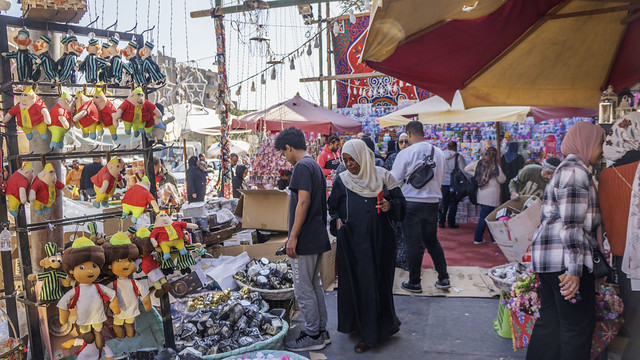 |
| The stand shrunk in size , quantity and quality too |
That stand is evidence of how the past 12 months the economy was hit hard whether formal or informal.
The photos and video are the biggest evidence of how Egypt’s formal and informal economy were hit hard in the past 12 months. After all, the economy is connected with each other.
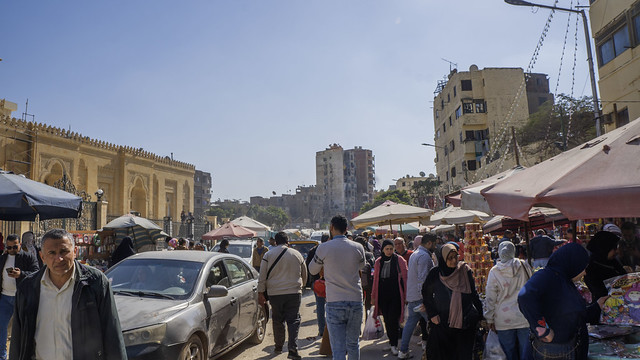 |
| You may think that it is crowded but actually it was not that "crowded" |
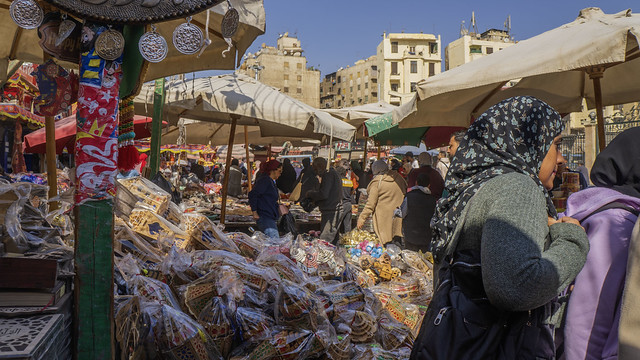 |
| This year most customers especially women were not really into lanterns |
Ironically on the same day, I went to the market, Egypt’s Central Agency for Public Mobilization and Statistics (CAPMAS) released the annual headline inflation in February.
The annual headline inflation reached a record level of 219.4 points in February, indicating an annual rate of 36%, compared to 31.2% in January.
Meanwhile, Egypt’s monthly inflation rate accelerated in February to 11%, up from the 1.7% rate recorded in January.
 |
| Less lanterns were sold on both sides of the street this year |
According to CAPMAS, this acceleration happened mainly to the rise in prices of meat and poultry by 25 %; grains and bread by 14.2 %; fish and seafood by 11.5 %; dairy products, honey, and eggs by 12.8 %; oils and fats by 14.1 %; fruits by 7.3 %; vegetables by 9.2%; and sugar and sweets by 6.9%.
It was also caused by the increase in prices of tea, coffee, and cocoa by 11.3 %; tobacco by 8.5 %; ready-made clothes by 4.4 %; footwear by 3.2 %; water and various housing services by 10.7%; furniture, furnishings, carpets, and other floor coverings by 8.6 %; household appliances by 7.4%; and medical products, appliances, and equipment by 17.3%.
I had to share these numbers to tell you why there was less demand on Ramadan lanterns and co comparing to previous years.
Many families would focus on food than buying several lanterns. Kids can play with their old lanterns.
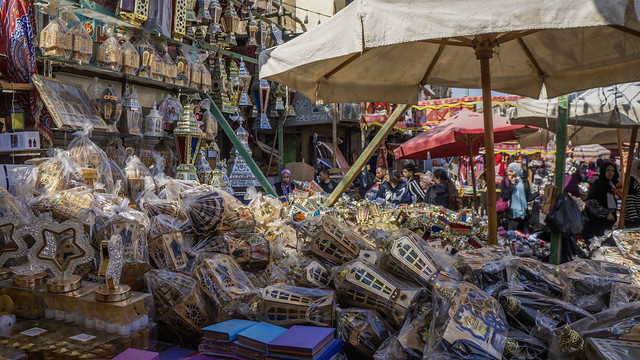 |
| Wooden handmade lanters were sold at the market |
It is less in everything compared to previous years, most importantly customers.There are fewer lanterns, fewer dates, fewer dried nuts and fruits and fewer vendors and stands.
Egypt imports about 90% of its needs from dried fruits and nuts from countries like the United States “you read it right as we import walnuts and other stuff from there” and Turkey “dried apricot and pistachio” This led to a 60%-150% “you read it right too” increase in the dried fruits and nuts prices according to Cairo Chamber of Commerce.
I saw the result of this hike in prices firsthand.
Less stands and vendors and less demand for dried fruits and nuts; unlike in previous years considering the fact you can find they are usually cheaper in Al-Sayeda Zeinab than other places in Cairo above them supermarket chains.
 |
| One of the main stands selling dates and dried fruits in the market |
The only thing that was not impacted that much by the economic crisis were dates.
Egypt is already the biggest producer of dates worldwide currently with 18% of global production, which is approximately one-fifth of the world's production.
 |
| Various types of local dates from Egypt sold at the market |
Egypt exports around 60,000 tons of dates from 15 kinds, with values ranging from 58 to 60 million dollars annually.
Still, there were fewer stands selling dates compared to previous years.
These dates including a special kind for diabetes patients are all produced in Aswan. The prices started from LE 15 to 90 for dates while ripped dates like Medjool can reach up to LE 450.
On the other hand, what caught the attention of the customers mainly women was the cheap Ramadan home accessories.
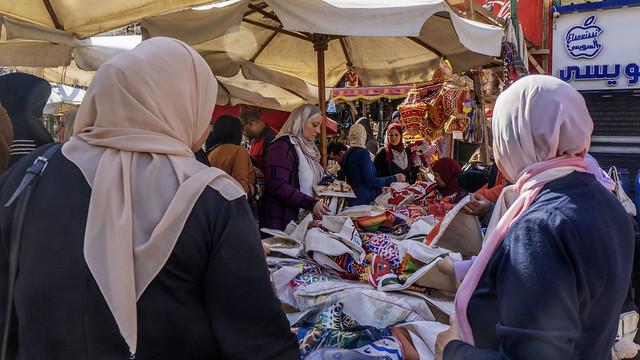 |
| Checking Ramadan cloth at the market |
Those home accessories started from LE 10 to LE 300-500.
Nevertheless, according to news reports, the prices of the accessories rose between 50%-100% compared to last year's prices
 |
| Women bought the cheap Ramadan home accessories more than anything |
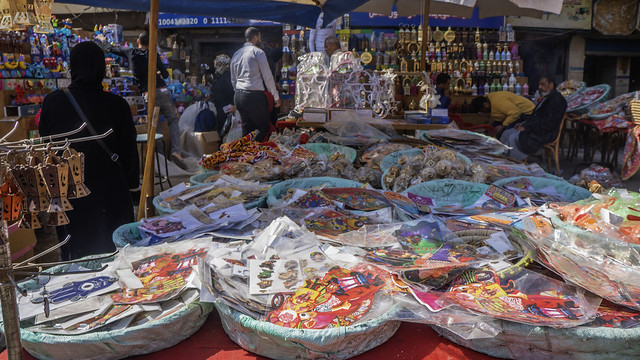 |
| Ramadan posters, stickers and fridge magnets |
There were also the usual Ramadan garlands of Khayamia. I have not seen the Palestinian flag Ramadan garlands but I found out that are being sold according to Egyptian news reports.
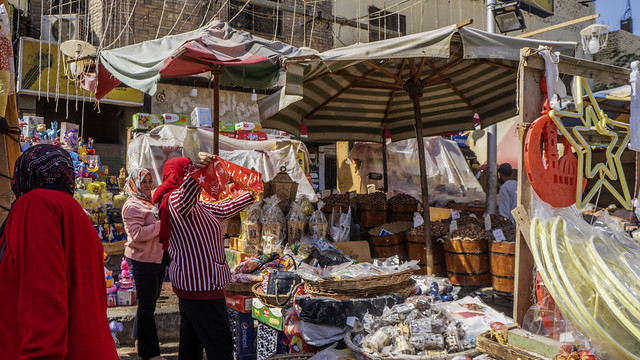 |
| Women checking Ramadan garlands in the market |
There were also a few Ramadan plastic cups and that new set was sold made of plastic carfare and cups with different colors for a price not more than LE 130.
 |
| You can see the cheap set of plastic carefare and cups in the photo |
Nevertheless, there were fewer home accessories sold in the market compared to its older editions.
There were also bright colored copies of Holy Quran sold at the market.They were sold before in the market but in different stand.
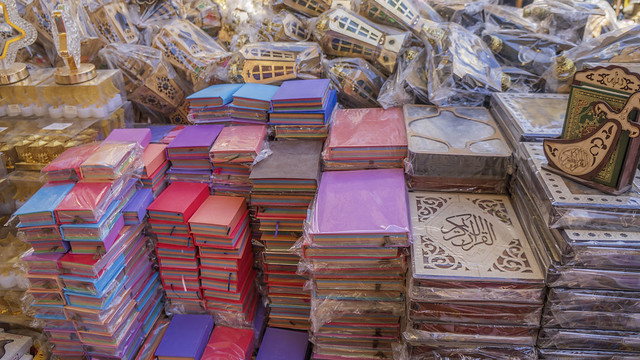 |
| I bought the violet covered Holy Quran for LE 250. Each chapter has a different colour |
 |
| Copies of Holy Quran books , incense burnders and small plastic candles sold at the market |
Al-Sayeda Zeinab Mosque is under a huge renovation process as it joined the Bohra’s funded Ahl El-Beit Mosques and Shrines renovation.
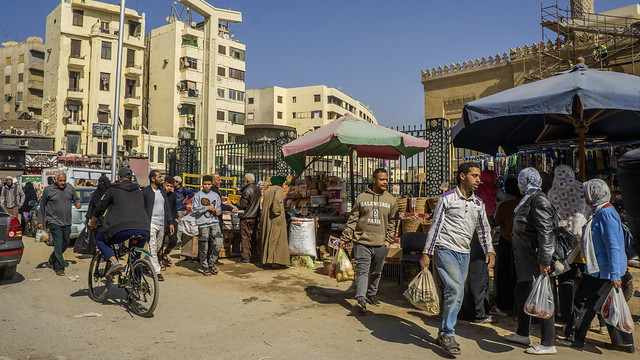 |
| The market was held despite the renovations of Al-Sayeda Zeinab Mosque |
 |
| This nice old man who told me that he would shock me with the price of that big cloth Ramadan lantern |






Medvedev, who is deputy chairman of Russia’s security council, posted to Telegram:
ReplyDeleteTerrorists understand only reciprocal terror. No trials or investigations will help if force is not answered with force, and deaths with total punishment of terrorists and repression of their families. That’s our worldly experience.